Sometimes current events have a way of creeping into even the most routine aspects of daily life. The run-up in fuel prices forces us to rethink every journey we take, even if it’s just a mundane run of weekend errands.
For Saab, the national demand for more fuel-economical vehicles should be good news as it replaces its old 9-7X sport-utility vehicle with the more modern, efficient and, frankly, much more fun-to-drive 9-4X. Unfortunately, even here the headlines might creep into the buying decision for many potential customers.
The Swedish automaker experienced something of an unexpected miracle, in early 2010, when the Dutch-based Spyker Cars acquired the brand from General Motors, which seemed intent on shutting Saab down. The long-struggling marque seemed to be on the mend, this year launching more products – including the 2012 Saab 9-4X – then at any time in its history.
Unfortunately, a cash crunch has disrupted production of some Saab models – though not the new crossover. Saab seemed to have dodged the bullet and lined up yet another white knight when it agreed to sell a chunk of the company to the Chinese automaker, Hawtai. But as we were ready to post this review that deal appeared to be coming undone.
Even if Saab can put Humpty Dumpty back together – and there’s no question the maker’s Chairman Victor Muller is a remarkably resourceful entrepreneur – it’s possible the recent uncertainty will convince at least some potential buyers to steer clear of Saab showrooms. It’s hard to argue against such concerns. Even the most inexpensive automobile is a major purchase, and at $50,000 or so for the Aero edition, $40,000 for the base, once you pay for freight, taxes and the typical adds-ons, the 2012 Saab 9-4X isn’t cheap.
That said, anyone looking for a roomy, comfortable and well-appointed SUV who doesn’t at least take a look at the new Swedish offering is making a mistake. All the drama aside, the new 9-4X is a worthwhile and compelling product.
If the basic look is familiar, that’s not an accident. The new offering shares many of its basic design cues with another recent addition to the Saab line-up, the 9-5. Both models were strongly influenced by the popular Saab Aero X of a few years back, most notably in the form of the tapering roofline that gives the 9-4X a sense of kinetic motion. Both sedan and crossover also share a long and muscular hood with the familiar Saab face, a trapezoidal grille surrounded by swept-back headlamp assemblies.
It’s unmistakably a Saab, unlike the old 9-7X, which was a barely-disguised rehash of General Motors’ big SUV line. Ironically, the new 9-4X is the last product that will emerge from Saab largely based on GM technology. The new crossover shares much of its underlying DNA with the second-generation Cadillac SRX – which, by the way, is nothing to complain about.
The handsome design of the exterior carries over to the roomy cabin, which is a near clone of the new 9-5. There’s an obvious Scandinavian mindset, simple yet elegant, with functionality being a critical theme. That means neither drab nor inelegant. There’s a reserved elegance to the layout, with its soft LED lighting and dark trim. And, of course, there’s a Saab button between the front seats, precisely where you’d expect it on a Saab.
Saab clearly wasn’t trying to win you over with bling – though to be honest, they could use a wee bit more. If there’s anything to complain about it’s the rather expansive sea of flat plastic that surrounds the large video display that caps the center stack. It just doesn’t – if you will – stack up to the rest of dashboard and we’re glad to hear that Saab officials recognize the problem and will tweak the design in the near future. Even the smallest chrome bezel would be a big improvement.
If we have any other quibble it’s with the slightly awkward position of pedals and wheel. While the steering wheels does tilt and telescope we couldn’t quite find the sweet spot despite having adjustable pedals.
That said, we’re particularly fond of the gauge cluster, which is clearly the most sophisticated part of the package. In European trim, the bullseye within the speedometer features a circular LCD screen that provides critical information. Saab, it’s worth noting, has traditionally tried to offer a full range of electronic bells-and-whistles, but it has consciously steered clear of the complex control systems, like BMW’s iDrive or the Audi MMI, that so frustrate many drivers. To its credit, everything you need can be operated on the 9-4X with the twist of a knob or the touch of a button.
We’ve been looking forward to getting behind the wheel of the 9-4X for some time, and had a chance to get up close and personal with one during a visit to a Saab test track in Northern Sweden during mid-Winter. It was a long journey and, sadly, we were only allowed to experience the car in static mode. For our first drive we stuck closer to home – down in Washington, D.C., to be more precise, and the surrounding Virginia countryside, where we had a chance to experience the new crossover in a variety of conditions including heavy traffic, high-speed highway driving, and a pleasant run along some tight and twisty country roads.
For the drive, Saab offered us the top-line 9-4X Aero, with its turbocharged 2.8-liter V6 – the engine it shares with the 9-5 Aero. Mated to a smooth and quick-shifting 6-speed automatic, the powertrain turns out 300-horsepower and 223 lb-ft of torque, and despite a curb weight of 4650 pounds, the smooth-running engine was able to launch us from 0 to 60 in a reasonably impressive 7.7 seconds. More significant for day-to-day driving, there’s almost none of that turbo lag – and entirely none of the torque steer – that many folks might recall from Saabs of years past, thanks to such improvements as the twin-scroll turbocharger.
Fuel economy, meanwhile, is 19 mpg Combined. Not the best in its segment, but competitive and a solid improvement over the gas-sucking old Saab 9-7X.
(For those who want even better mileage, Saab is also offering a front-drive version of the 9-4X with a 265-horsepower, naturally-aspirated 3.0-liter V6.)
One of the more pleasant – and useful – features on the Aero is its all-wheel-drive system. Saab calls it XWD, or Cross-Wheel-Drive, a distinction that has to do with its ability to shift torque not only front-to-back, depending upon road conditions and driver behavior, but also from left to right. This gives the vehicle even more grip on pavement where, say, the right wheels might be slipping on ice while the left side has its treads on dry pavement.
XWD also appeals to the performance fan since it can use torque vectoring to help steer, rather than push, the Saab 9-4X through a corner.
Our day of driving revealed the throttle to be intuitively responsive, if requiring a fair bit of effort. The brakes were solid and showed no sign of fade even after some aggressive use of the pedal while blowing through some back country roads.
Particular kudos for Saab’s DriveSense, a programmable system that controls a variety of vehicle functions, from suspension damping to steering feel, to automatically adapt to the way the vehicle is driven. Right now, you need to switch between sport or comfort modes, but an auto-adaptive mode will be added for 2012. There’s also an Eco mode, by the way, which modifies vehicle operations to maximize fuel economy. Among other things, it makes the throttle less twitchy, so you’re not inadvertently revving up and down while cruising on the highway, a hidden but significant way to reduce mileage.
One of the more notable differences between the 9-4X and the Caddy SRX is that Saab’s crossover feels all the more nimble, with decidedly little body roll, even in hard corners, and pleasantly responsive point-and-shoot steering. If you ignore the clearly higher seating position you might just think you’re behind the wheel of the sporty 9-5 sedan.
No, it’s not quite as nimble as its BMW competition, but that shouldn’t matter to anyone other than those looking for the maximum performance over other attributes. On the whole, the Saab 9-4X provides a good balance of styling, room handling, performance and fuel economy
As for competitors like the Audi Q5 or Mercedes-Benz GLK, the new Swedish sport-crossover stands up admirably.
Based on the merits, the 2012 Saab 9-4X should be drawing them into the showroom as it begins rolling out of the plant (a GM factory in Mexico that has not been impacted by Saab’s financial problems). It’d be too bad if the headlines scare potential buyers off. If it makes it through the current crisis – and we’re cautiously betting on Chairman Muller to pull this one off – Saab should be in a solid position to move forward. The new 9-4X gives us reason to believe there’s life left in the old brand.

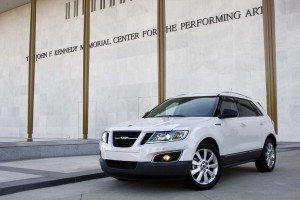
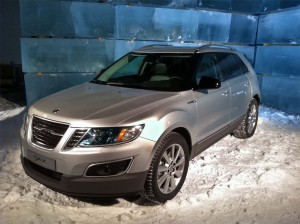
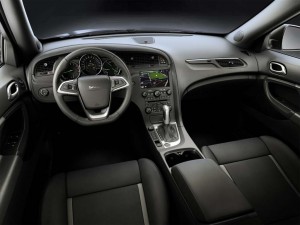
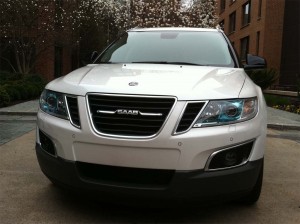
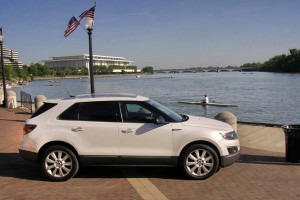

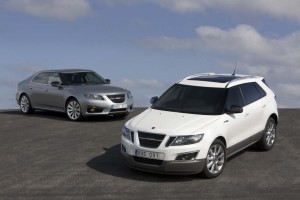
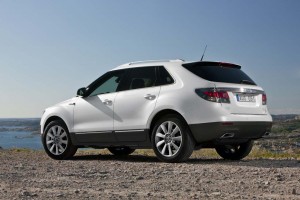
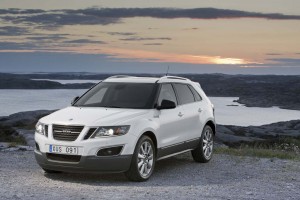
Thank you for this well informed review. Although, I would like to point out the 9-4x actually does have power adjustable pedals as you would like.
For the complete list of options/features:
http://9-4x.saabcars.com/data/9-4XBroschyr_110419.pdf
You are absolutely correct, and I plead guilty…of not just faulty memory but also of misreading my own notes, which more accurately read that I could not find a comfortable balance of wheel and pedal positions despite having adjustable pedals. I have made this revision. Meanwhile, please note the addition of a critical detail that notes the $50,000 figure was for the Aero version — which we noted was the model we tested. The base model is about $10,000 less, as also added to the story.
Paul A. Eisenstein
Publisher, TheDetroitBureau.com